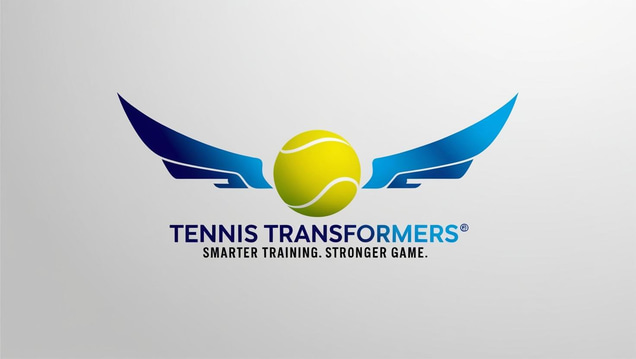Practice Makes Progress: Perfect Your Tennis Skills
Discover how consistent and purposeful tennis practice can lead to substantial progress in your skills. Learn why the journey to perfection in tennis is about improvement through dedicated practice, not just talent.
EXERCISE & FITNESSTENNIS TALK
4/2/20253 min read


Practice Makes Progress: The Road to Perfection in Tennis
Tennis is a game of skill, precision, and mental resilience. While natural talent plays a role, the true key to success is consistent and purposeful practice. The age-old adage, "practice makes perfect," is only partially true; in reality, practice makes progress, and sustained progress leads to perfection.
Purposeful Practice: The Key to Improvement
Not all practice is equal. Simply hitting balls back and forth without a clear objective will not lead to meaningful improvement. If you want to elevate your game, every practice session must be purposeful and structured. This means having a plan—working on specific aspects such as groundstrokes, volleys, serves, or footwork with a set goal in mind.
Purposeful practice involves breaking the game down into smaller components and refining them. For example, if you struggle with consistency on your backhand, dedicating a session to repetition with a clear focus—like keeping the ball deep in the court or maintaining a certain spin—will yield far better results than mindlessly hitting backhands with no clear direction.
Coaches and top players understand that deliberate practice is the foundation of improvement. They analyze their weaknesses, isolate them, and work to turn them into strengths.
Building Consistency Under Pressure
One of the primary objectives of practice is to build consistency, especially under match pressure. Anyone can hit a perfect forehand during a relaxed practice session, but replicating that shot at 5-5 in the final set of a Grand Slam match is another story. Purposeful practice ensures that when the moment arrives, muscle memory takes over, and nerves do not lead to unforced errors.
To develop match-level consistency, practice sessions must include pressure-based drills. This could involve:
Simulating match conditions with score-based training.
Engaging in high-intensity drills that demand accuracy.
Practicing decision-making under stressful situations.
Incorporating mental training to handle high-stakes moments.
The goal is to create habits so ingrained that when the pressure is at its peak, execution remains flawless.
The Grand Slam Mindset: Improving Match by Match
Winning a Grand Slam is the pinnacle of tennis achievement. It requires winning seven consecutive matches—or ten if you’re a qualifier—against the best players in the world. The road to the title is not about playing perfect tennis from day one; it’s about improving with each match.
Many past champions started a Grand Slam with shaky performances but found ways to raise their level as the tournament progressed. Champtions often speak about using early-round matches to work through difficulties and fine-tuning their game before reaching the later rounds, where the stakes are highest.
This approach reflects the importance of continuous progress. Even at the highest level, adaptation and refinement are crucial. Players must assess their performances, make adjustments, and enter each match better than the last. The same philosophy applies to training—there should always be an evolution, a drive to become better each day.
Progress Over Perfection: The Journey Never Ends
A common trap for many players is seeking perfection too soon. While perfection is the ultimate goal, it is the result of consistent progress, not a sudden leap. Every great player understands that improvement is incremental and that setbacks are part of the process.
Even the best players in the world have flaws. Champions did not achieve perfection overnight; they committed to progress, day after day.
How to Ensure Progress in Your Own Tennis Journey
For players at all levels, the principle remains the same: structured and focused practice leads to improvement, which in turn leads to peak performance. Here are key strategies to ensure sustained progress:
Set Clear Objectives: Each practice session should have a specific goal, whether it’s improving shot accuracy, increasing serve consistency, or enhancing footwork.
Quality Over Quantity: A well-structured hour of focused practice is far more beneficial than three hours of unfocused hitting.
Simulate Match Conditions: Regularly play under match-like scenarios to build mental and physical endurance for real competitions.
Analyze and Adjust: Keep track of progress, analyze performance in matches, and adjust training accordingly.
Stay Mentally Strong: Tennis is as much a mental game as a physical one. Confidence and resilience grow through repeated exposure to high-pressure situations in practice.
Learn From Mistakes: Mistakes are not failures—they are learning opportunities. Every missed shot provides feedback for future improvement.
Final Thoughts
Tennis is a game of continual growth. While perfection is the ultimate aim, it is progress that truly matters. Purposeful practice ensures that every session builds toward a stronger, more consistent game. Over time, this progress accumulates, allowing players to perform at their best under the most intense conditions. Whether you’re an aspiring professional or a weekend club player, embracing this philosophy will unlock your full potential on the court.
So, step onto the court with intention, practice with purpose, and let progress guide you toward perfection.
©2025 Tennis Transformers. All rights reserved
Disclosure
This website contains affiliate links. If you purchase through these links I may earn a small commission at no extra cost to you. I only recommend products I believe add value to you. This helps support my work and allows me to continue providing valuable content. Thank you for your support!
